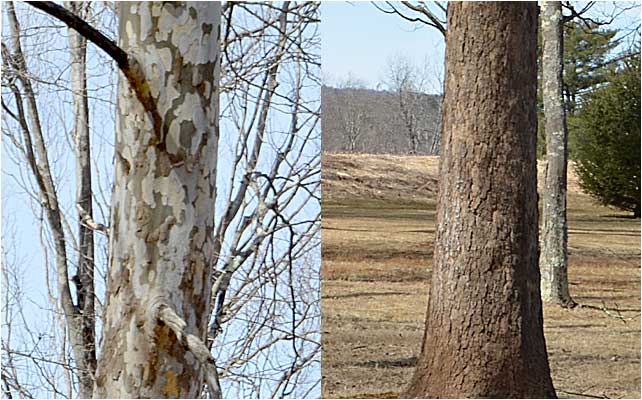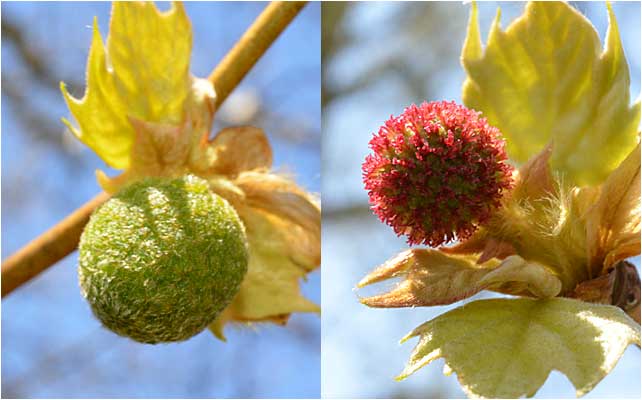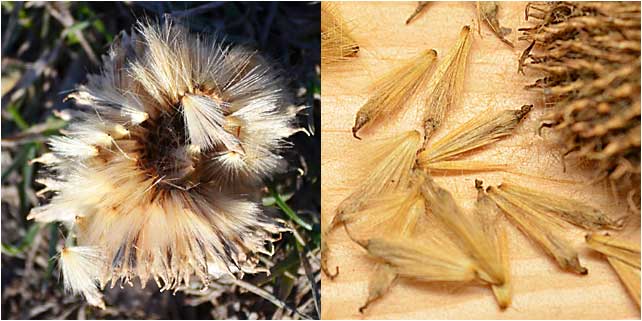39. AMERICAN SYCAMORE
Platanus occidentalis

The American Sycamore on the Arboretum Tree Trail is one of several that were planted in straight rows in Westmoor Park's THE GROVE. While this symmetrical planting may have been fine for "temporary" trees, it is a bit close for mature trees, particularly Sycamores. American Sycamore is one of the largest trees in the U.S. and typically thrives in riverine environments with lots of "field" space. In the forest they are forced to be taller and compete with their neighbors for sunlight and other resources
The canopy is often hard to see in The Grove, but typical foliage for Late Spring/Summer, Fall, and Winter is shown above.
4 SEASON, BARK

One of the key identification points for American Sycamore is its unique bark. The lowest part of the trunk features ridged furrows like most trees, but as you go up the tree the back begins to shed (exfoliate) and exposes a mottled pattern of nearly white inner bark dappled with darker outer bark. The London Planetree also shares some of these characteristics, but instead of whitish inner bark - it is green.
SPRING FLOWERS, M & F

While you can learn a lot about trees just from looking at them in all four seasons, it is Flowers & Fruit that help you fully understand a tree's annual cycle. The American Sycamore is monecious (male/female flowers on the same tree) and in this case the flowers are nearly identical. The bright red one is the male flower and those are little pollen pods extruding from the ball. They are only on the tree briefly in later April. The green flower on the left is actually an un-fertilized seed ball. Once fertilized...
FALL & SUMMER, SEED BALL

The seed ball of the American Sycamore begins developing in the Spring and continues through Summer. Although it appears solid, it is really composed of thousands of tiny seeds with hairs attached to them (achenes) to aid distribution in the Fall and Winter (inset photo). The balls which drop from the tree in Fall are almost weightless to touch, and quite delicate. The American Sycamore only has a single seed ball hanging from a a single stalk.
SEED BALL & ACHENE

This is 1/2 section of a seed ball on the ground (left) and a close-up of the individual seeds. Note the hair-like structures (achenes) on the seeds. The hairs act as a wing to aid wind dispersal and also trap air to allow the seed to float in water. (ed. note: this image is of the seed ball of the nearly identical London Planetree).